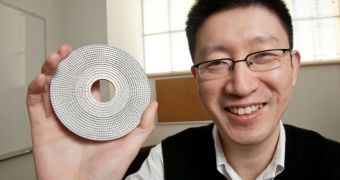Science-fiction is indeed starting to become reality, like many predicted years ago. Recently, scientists developed an invisibility cloak of sorts, that works for sounds emitted underwater. The finding is important, as it could be used to make submarines completely “invisible” to enemy sonars.
The new acoustic cloaking technology was developed by researchers at the University of Illinois in Urbana-Champaign (UIUC), who were led by expert and mechanical engineering professor Nicholas Fang. The group proved that sonar is no match for this technology.
While Fang started this line of research in Illinois, he has recently decided to move to Cambridge, and take up a position in the faculty at the Massachusetts Institute of Technology (MIT). Regardless, he will continue to expand on the work despite the job change.
The investigator explains that there are multiple areas in which the innovation could be applied, both military and civilian or commercial. The cloaking material he and his team developed has been artificially-engineered from scratch.
It was therefore designed by researchers to perform a certain function, which in this case is the efficient application of optical properties to acoustic environments. In the water, the sonar equipment is both a submarine's eyes and its ears.
“The concept is adapted from optics,” Fang says of the new material, which looks like a 2D disk with hole at the center. The most important breakthrough came when he decided to apply the principals of refracting light to bending sound waves.
“Light will always find the easiest way to travel through the core of a fiber optic cable. The same concept is borrowed for acoustics. We ran a set of fibers, or channels, around something we wanted to hide,” the team leader explains.
Whenever an object is placed in the hole at the center of the disk, sound waves select to travel through the artificial material, rather than hit the object being shielded. The sound waves then move past the object as if it wasn't there.
“The acoustic wave will travel through the channels because it’s easier to travel through there. So if we use an array of those channels, the moment sound hits the cylindrical structure, it will travel around the shell instead of traveling through,” Fang adds.
“The paper only presented a very crude toy, I would call it, that demonstrates the basic physics. But it’s possible to make a flexible structure. Fabric is certainly a possibility,” he goes on to say.
The expert and his team detailed their finding in a paper submitted for publication in an upcoming issue of the esteemed scientific journal Physical Review Letters.

 14 DAY TRIAL //
14 DAY TRIAL //